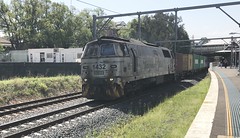
- Find Out More About:
- 10 Ft Shipping Container Dimensions
Bokashi Composting: Summary, Benefits, and Down Sides
by
Ganga
Bokashi composting is a method of involved composting sans oxygen by which organic waste is fermented in an air tight container by means of a bran that is inoculated with effective microbes. Once completely fermented, the organic waste is then typically entombed within a yard in which it breaks down speedily generating nutrient loaded garden soil.
Heritage: Initially developed and practiced in Japan, the method of bokashi fermentation has been practiced for 100s of years. It was made popular by Teacher Teruo Higa who established the right make up of bacteria necessary to most effectively digest food waste.Ingredients: Bokasi bran is commonly comprised of wheat bran, water, molasses and microorganisms.Process: When Bokashi bran is used with food scraps, the microorganisms will develop triggering the food scraps to ferment and break down.Uses: Bokashi composting is used by everyday people and food service businesses. In household functions, food is placed in an airtight container and the bokashi bran is applied. Within a few weeks, the bran and microbes will ferment and break up the food waste. After the food waste is fermented it should be put into a compost pile, buried in trenches, or in a backyard where it will quickly biodegrade.Benefits: Bokashi Gardeners report a range of benefits to making use of bokashi food recycling rather than conventional composting tactics, including:Quickness: Organic material breaks down with bokashi bran for a time frame of a few weeks and is subsequently ready to be placed in trenches or garden soil. Traditional Composting usually takes longer (though it is dependent on the process of food recycling) and takes place over the course of a few months.Odours: Since bokashi composting is anaerobic, the bran application procedure has got to happen within a sealed container. As a result, there is no bad aroma involving bokashi composting.Pesky Rodents: Aged Bokashi food scraps are kept indoors in a sealed container or entombed in the earth and as a result, as opposed to some back garden compost bins, will not normally bring in critters or rats.Greenhouse Gases: No GHGs are made during bokashi food recycling. This is distinct from traditional food recycling through which GHGs are produced. Health of the Soil: The moisture content in dirt that has been combined with bokashi fermented food is normally greater than that of normal compost. Consequently, bokashi food recycling allows for greater preservation of groundwater. The organic nutrients in the earth after bokashi fermentation are also not as water soluble as are the nutrients derived from composting (with oxygen) and as a result are unlikely to fall away as a result of run-off following rains.Disadvantages:Price: You have to purchase bokashi bran or mixture from a supplier such as BokashiCycle.Compostables: Bokashi fermentation is not likely to biodegrade and ferment compostable food packaging.
Learn more about
compostable cups
and getting a
curbside composting
program in your area.
Article Source:
Bokashi Composting: Summary, Benefits, and Down Sides}


